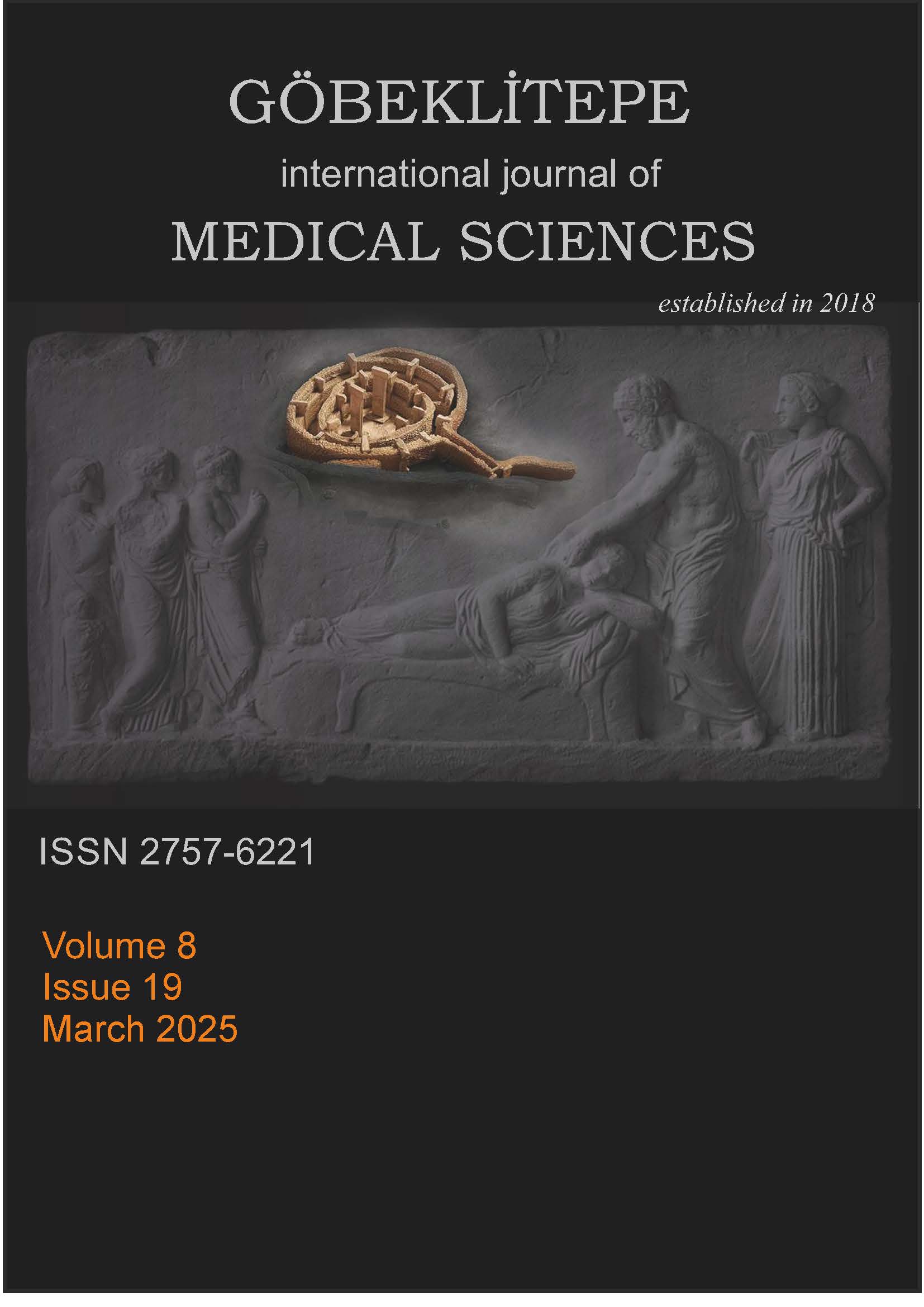DETERMINATION OF URINARY SYSTEM INFECTIONS RISK FACTORS AFTER KIDNEY TRANSPLANTATION: RETROSPECTIVE ANALYSIS
BÖBREK NAKLİ SONRASI ÜRİNER SİSTEM ENFEKSİYONLARI RİSK FAKTÖRLERİNİN BELİRLENMESİ: RETROSPEKTİF ANALİZ
Keywords:
Kidney transplant, urinary tract infection, nursing care, nurseAbstract
This study was conducted to determine the risk factors of urinary tract infection after kidney transplantation. It was designed as a retrospective and descriptive study. The study was completed with data from 99 patients. Age, gender, year of transplantation, chronic diseases, transplant type, graft loss, length of hospital stay, laboratory results, dialysis duration, DJ (double J ) catheter duration, antibiotic use, steroid and immunosuppressive drug doses were investigated in patient files and hospital information system records. 48.5% of the patients were hospitalised for 19 days or longer, 47.5% used more than 6 mg prednisone, 98.0% used double immunosuppressants and 19.2% had an additional surgical procedure. The duration of DJ catheter stay was 44.22±26.46 days. Postoperative urine culture produced infection on the 7th day in 4%, 14th day in 6.1%, 1st month in 11.1%, 3rd month in 12.1% and 6th month in 11.1%. CRP levels were found to be ≥5mg/l in 47.5% of the patients on postoperative day 1, 68.7% on postoperative day 3 and 51.5% on postoperative day 7. Procalcitonin levels were found to be ≥0.25 ng/mL in 27.3% of the patients on postoperative day 1, 31.3% on postoperative day 3, and 37.4% on postoperative day 7. Age, gender, chronic diseases, duration of DJ catheter, duration of dialysis, duration of hospital stay and number of immunosuppressive drugs used are among the risk factors for the development of UTI.
References
Ooms L, Ijzermans J, Voor in’t Holt A, Betjes M, Vos M, Terkivatan T. Urinary tract infections after kidney transplantation: A risk factor analysis of 417 patients. Annals of Transplantation. 2017;22:402–8.
Karadeniz A, Özsüt H. Transplantasyon ve üriner sistem infeksiyonları. In: Yalçın AN, Köse Ş, Erbay RH, editors. Transplant infeksiyonları. İdeal Kültür Yayıncılık; 2012. p. 169–70.
Amari EB El, Hadaya K, Bühler L, Berney T, Rohner P, Martin PY, et al. Outcome of treated and untreated asymptomatic bacteriuria in renal transplant recipients. Nephrology Dialysis Transplantation. 2011;26(12):4109–14.
Goldman JD, Julian K. Urinary tract infections in solid organ transplant recipients: Guidelines from the American Society of Transplantation Infectious Diseases Community of Practice. Clinical Transplantation. 2019;33(9):1–16.
Gondos AS, Al-Moyed KA, Al-Robasi ABA, Al-Shamahy HA, Alyousefi NA. Urinary tract infection among renal transplant recipients in Yemen. PLoS ONE. 2015;10(12):1–10.
Karadağ Arlı Ş, Bakan AB. Kateter İlişkili Üriner Sistem Enfeksiyonları Kontrol Önlemlerine Yönelik Hemşirelerin Bilgi ve Tutumlarının Değerlendirilmesi. Hacettepe Üniversitesi Hemşirelik Fakültesi Dergisi. 2020;7(1):1–7.
Aldemir K, Gürkan A. Böbrek Transplantasyonu Sonrası Üriner Sistem İnfeksiyonları ve Hemşirelik Bakımı. Türk Nefroloji, Diyaliz ve Transplantasyon Hemşireleri Derneği Nefroloji Hemşireliği Dergisi [Internet]. 2018;2(13):71–6. Available from: https://dergipark.org.tr/en/download/article-file/510647
Ma ZZ, Yang HJ, Pan X, Duan YD, Li L, Xiao Y, et al. Construction of a nursing solution to prevent and control urinary tract infection in the early stages of kidney transplantation. Translational Andrology and Urology. 2021;10(12):4392–401.
Akbari R, Rahmani Firouzi S, Akbarzadeh-Pasha A. Old habits die hard; does early urinary catheter removal affect kidney size, bacteriuria and UTI after renal transplantation? Journal of Renal Injury Prevention [Internet]. 2017;6(1):43–8. Available from: http://dx.doi.org/10.15171/jrip.2017.08
Kazımoğlu H, Harman R, Mercimek MN, Dokur M, Uysal E. Evaluation of early and late-term infections after renal transplantation: Clinical experiences of sanko university medical faculty transplantation center. Turkish Journal of Urology. 2019;45(1):63–9.
Yüksel E, Akkoç H. Urinary Tract Infection in Kidney Transplant Recipients : The predictors and two - year outcomes. Dicle Med [Internet]. 2022;49(3):436–46. Available from: file:///C:/Users/user/Downloads/Urinary_Tract_Infection_in_Kid.pdf
Alangaden GJ, Thyagarajan R, Gruber SA, Morawski K, Garnick J, El-Amm JM, et al. Infectious complications after kidney transplantation: Current epidemiology and associated risk factors. Clinical Transplantation. 2006;20(4):401–9.
Feber J, Špatenka J, Seeman T, MatouŠovic K, Zeman L, DuŠek J, et al. Urinary tract infections in pediatric renal transplant recipients - A two center risk factors study. Pediatric Transplantation. 2009;13(7):881–6.
Khosravi AD, Montazeri EA, Ghorbani A, Parhizgari N. Bacterial urinary tract infection in renal transplant recipients and their antibiotic resistance pattern: A four-year study. Iranian Journal of Microbiology. 2014;6(2):74–8.
Esezobor CI, Nourse P, Gajjar P. Urinary tract infection following kidney transplantation: Frequency, risk factors and graft function. Pediatric Nephrology. 2012;27(4):651–7.
Soylu L, Aydin OU, Atli M, Gunt C, Ekmekci Y, Cekmen N, et al. Does early removal of double J stents reduce urinary infection in living donor renal transplantation? Archives of Medical Science. 2018;15(2):402–7.
Downloads
Published
Versions
- 2025-07-23 (2)
- 2025-03-26 (1)
How to Cite
Issue
Section
License
Copyright (c) 2025 Göbeklitepe Medical Science Journal

This work is licensed under a Creative Commons Attribution 4.0 International License.




